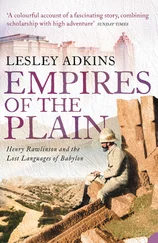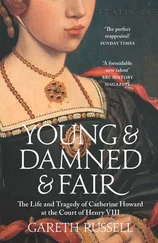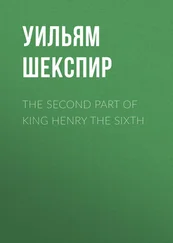Early that October, the commissions reported back. In the way to which it was becoming accustomed, Henry VIII’s council ordered their findings to be drawn up in a ‘clear book’, in a format to suit the royal attention span: it was to be made ‘in short parcels to be shown to his highness’. Then, on the king’s behalf, the council got down to business.
Transparency, it seemed, was the order of the day. In two meetings that autumn, the council swept away the remnants of Henry VII’s nebulous committees: the courts of wards and surveyors, the council learned in the law. These tribunals had been a ‘great abusion, vexation and trouble’ to the people of England, who had been harassed ‘contrary to the king’s laws and to their utter undoing’, and who had often ended up not even getting a proper acknowledgement at law that they had settled their debts with the crown. Now, out of the highest legal and spiritual considerations, the new king’s regime would abolish the tribunals in their entirety. The underlying motive, however, was made plain in the council minutes: the reforms were not so much about abolishing a system as consolidating it.
Because Henry VII’s committees had been extrajudicial, many of the prerogative rights that they had established and enforced on the crown’s behalf would, in time, lapse – unless, that is, they were legally defined. The cancellations of bonds were, of course, politically necessary, in high-profile, individual cases – but the new regime was not about to reverse the overwhelming gains in extending royal authority made under the old king. Now, all the debts or claims on the crown’s behalf that had not been explicitly cancelled by the recent commissions were grounded firmly in law, in order to ensure against any ‘great losses to our sovereign lord of such profits as should grow to his highness’. 42
Back in the crisis-ridden years of the mid-fifteenth century, the lawyer John Fortescue had outlined how it should be done. After the king had made successful claims to property and land, Fortescue advised, he should then legally establish this new ‘livelihood’ as the crown’s property in perpetuity, its ownership only able to be transferred away by act of parliament. 43This, effectively, was what Henry VIII’s council now did. What was more, although his father’s tribunals were abolished, their practices and personnel – with the exception of the two disgraced counsellors – continued more or less unchanged.
Early in 1510, the first parliament of the new reign confirmed John Heron in his post of general receiver of the king’s revenues. Under Henry VII, he had presided over the workings of the chamber treasury, the private system of finance and surveillance that, under the old king’s obsessive gaze, had assumed primacy over the labyrinthine but legally constituted exchequer. Now, Heron’s role was made official, if, in theory, more accountable; so, too, were those of the old king’s coterie of auditors and surveyors, including Sir Robert Southwell and Edward Belknap, whose powers were now established in law – and expanded in the process. Beneath the rhetoric of liberty and glory, meanwhile, the taking, prosecuting and collecting of bonds had continued with barely a break, apart from the superficial signs of glasnost .
Moreover, while parliament succeeded in rolling back certain ‘unjust laws’ and ‘past errors’, rather more remained in place. Writing in the Tower, Edmund Dudley had urged the abolition of the practice that had been the stock-in-trade of Henry VII’s tribunals: the summons by privy seal or letter, circumventing and halting the process of common law – or what he called ‘stopping of justice’. Parliament, indeed, proposed a bill doing away with this practice which, it stated, was contrary both to law and to Magna Carta. It also tried to pass a bill confirming the church’s liberties, and its legal independence from the crown. The king vetoed them both. 44
Finally, of course, the ‘reforms’ were about Henry VIII himself. Although he tried to follow – and did – his father’s practice of signing everything personally, and could display a familiar obsession with detail when the mood took him, he was impatient with the minutiae of government, preferring to leave it to others, and his participation in it was fitful. After all, he had to concentrate on the pursuit of virtue, glory and immortality. The fearsome thoroughness and power of Henry VII’s extrajudicial tribunals had depended on the king’s tight personal control. They would hardly have the same effectiveness under a monarch who could, quite evidently, not be bothered with them half the time, and who needed his reports in easily digestible ‘short parcels’. 45
In December 1509, twelve royal informers, imprisoned without trial during the round-ups the previous spring, were released on bail. Among them were the notorious Henry Toft, and the wardrobe servant William Smith, who had been ‘in good favour with our sovereign lord Henry VII’, and who had been convicted as a promoter days after Dudley. The following February, John Baptist Grimaldi was pardoned, to nobody’s surprise: after all, the bank of Grimaldi had processed Catherine’s dowry, while his cousin Francesco, now married to the queen’s lady-in-waiting Francesca de Caceres, was once more back in favour. The furious reaction among London’s politicians and merchants, though, probably helped set the seal on the fate of Empson and Dudley. 46
As the two men perhaps realized, they had no one left to speak for them. After a failed bid to escape from the Tower – the plans were leaked by his two accomplices – Dudley tried other avenues, his cousin Richard offering Thomas lord Darcy £200 to put in a word for him with the king. Darcy refused. 47
Their end came in summer 1510. On progress through Surrey, Hampshire and into the west country, the king’s hawking and hunting were apparently interrupted by a succession of disgruntled locals, petitioning him with ‘grievous bills and complaints’ against Empson and Dudley. However, the fact that the only mention of this rather vague episode comes in the London chronicle – and, at that, nearly a year after the royal commission had reported back – suggests that it may have been a cover for concerted pressure brought to bear on the king by city politicians. Whatever the case, Henry VIII had had enough. In what was to become a familiar reaction to knotty political problems, he sent a warrant to the earl of Oxford, constable of the Tower, ordering that the pair should immediately be ‘put to execution’. 48
On 18 August, Henry VII’s former counsellors were brought through cat-calling, jeering crowds to the public scaffold on Tower Hill, where they were to be beheaded. Also present, inevitably, was Thomas More. According to one of his early biographers, the condemned Dudley stopped to exchange words with More, telling him he had done well not to confess to any wrongdoing over his role in thwarting the late king back in 1504. Had More done so, Dudley told him, Henry VII would have undoubtedly had him executed.
The encounter may well have occurred, but the details of the story are apocryphal: Henry VII’s preferred method of punishment, after all, was death by a thousand financial cuts. But, as the biographer – Thomas Stapleton, a Catholic who fled the Protestant England of Henry VII’s granddaughter Elizabeth with an armful of source material, including quantities of More’s correspondence – undoubtedly intended, the exchange foreshadowed More’s own martyrdom. 49
Two weeks later, More would be appointed to the post Dudley had once held, of under-sheriff of the city of London; in his case, too, the job would be a stepping-stone to royal service, whose allure and glory he would be unable to resist. More’s career, of course, far outstripped Dudley’s in its brilliance. But like Henry VII’s notorious administrator, he too would be framed by the Tudor regime whose sovereignty he had worked with zealous ruthlessness to enforce.
Читать дальше












